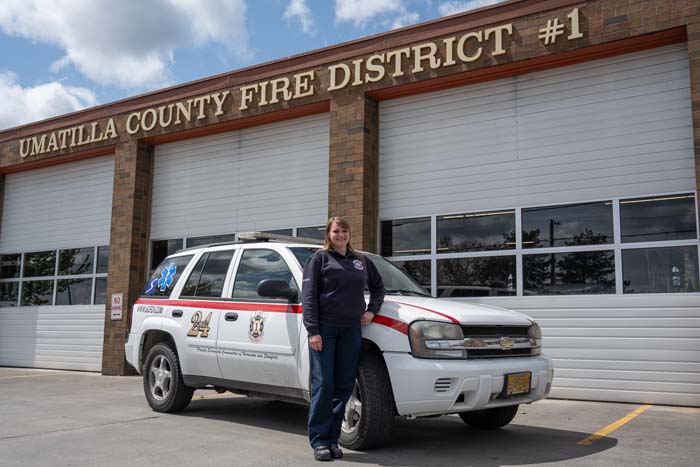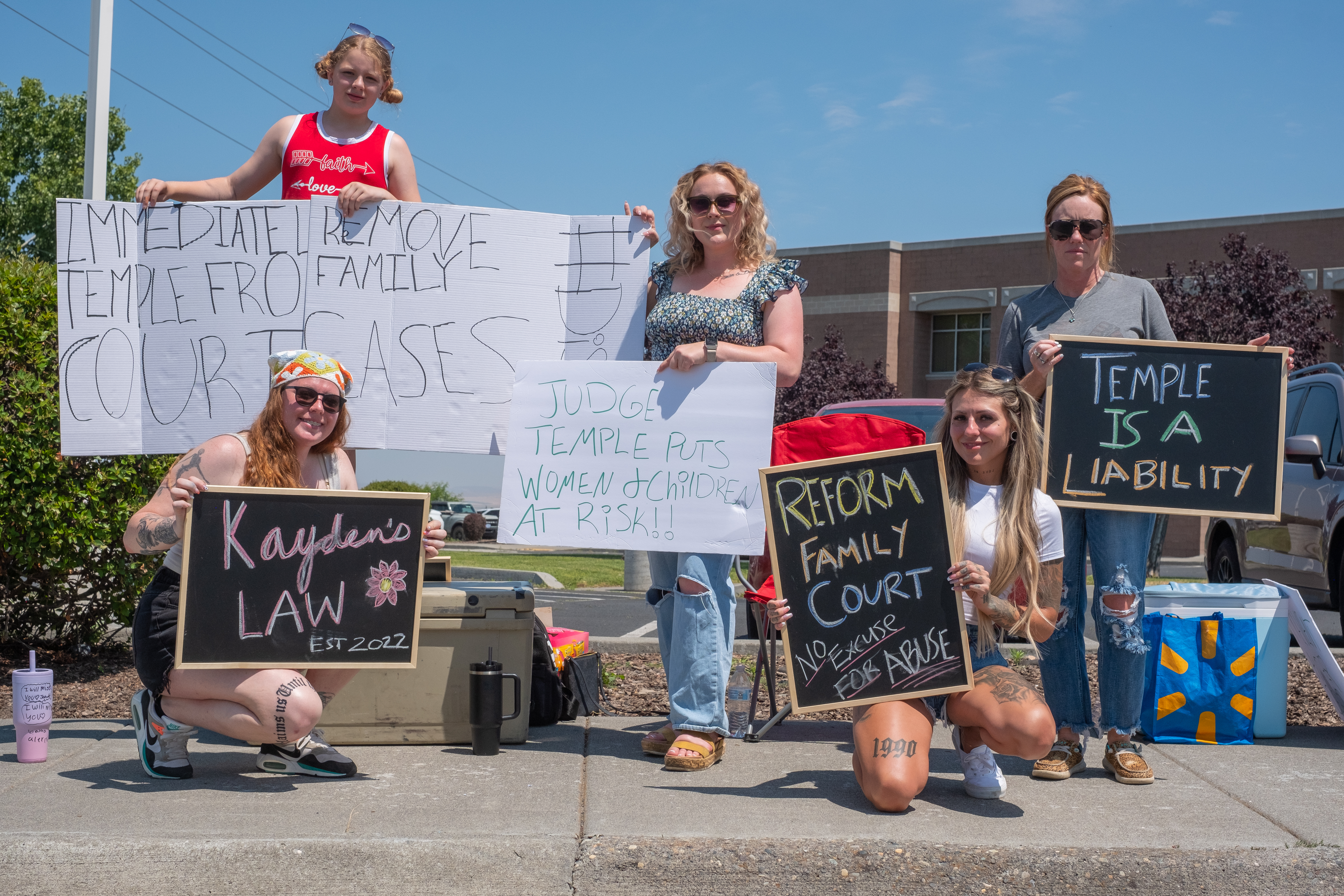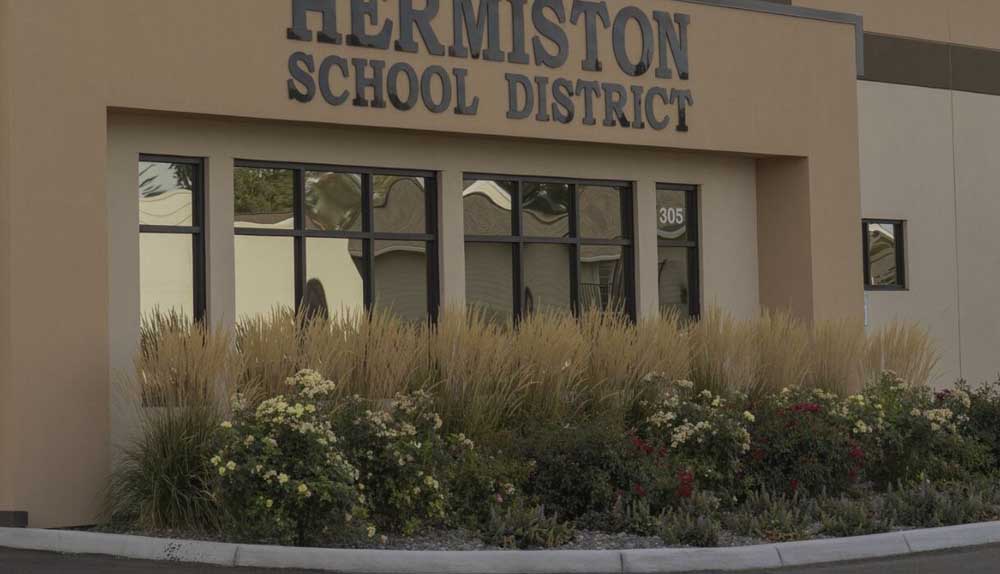UCFD1 Community Paramedics program offers in-home health care
Published 5:00 am Monday, August 28, 2023

- Umatilla County Fire District No. 1 Community Paramedic Jessica Marcum stands in front of the UCFD1 building in Hermiston. Marcum provide home visits for high-risk patients in Morrow and Umatilla counties after receiving hospital care for an illness, injury or medical procedure.
HERMISTON — The Umatilla County Fire District No. 1 Community Paramedics program uses a trained community paramedic for home visits to high-risk patients in Morrow and Umatilla counties following hospital care.
The program has been so successful it was one of three in the district recognized at the recent Fire-Rescue International in Kansas City, Missouri. The other two were workforce development and mental health awareness.
During home visits, community paramedics review medication prescriptions and disease education, assess living situations for safety, identify health care needs and encourage patients to receive follow-up care. They can also provide basic lab evaluations such as urinalysis, chemistry panel and 12-lead electrocardiogram, which is a test recorded using leads, or nodes, attached to the body.
“Being in a rural area, we’ve kind of tried to find what bridges the gap between people’s care,” UCFD1 Community Paramedic Jessica Marcum said. “So because of that, we kind of do a little bit of everything.”
Marcum to the rescue
The program started seven years ago to provide better care via additional patient services and education. According to UCFD1 Fire Chief Scott Stanton, this can identify potential health complications early, lowering health risks.
Marcum, so far the district’s only community paramedic, has spent six years providing these services.
“(Marcum) is checking to make sure they understand their discharge orders,” Stanton said. “She’s making sure to do medication reconciliation. Are they taking their meds correctly? She can do 12-leads in the field. … She does great charting, working with doctors and people at the hospital and doctors offices for referrals.”
In addition to providing paramedic services, Marcum can use her past firefighting experience to check smoke alarms, carbon monoxide detectors and assess wood floors for ground fault protection to prevent possible falls and accidents.
Cutting costs, healing time
Marcum said she also aims to reduce the costs of emergency room trips and hospital readmissions by educating patients and encouraging them to keep up with their health care appointments.
“You’re given a ton of information in the hospital, and they do a good job trying to set you up for success. But while you’re in the hospital, you’re overwhelmed,” she said. “You know, you have doctors and nurses and lab and physical therapists and billing departments and all these people come to talk to you that when you get home, you’re kind of just getting out of this whirlwind of all these people and all these things, and you’re almost overloaded with information.”
Marcum and Stanton said patients seem to heal better at home, where they’re more equipped to understand and retain information regarding their care.
The program emphasizes education as an important part of reducing patient readmissions and decreasing high ER use.
Stanton said Marcum has contributed greatly to improving the education and information of the patients she visits. In addition to her experience as a firefighter and paramedic training, she’s taken courses on loans and mental health.
“I’ve worked really closely with all of our local agencies so I can figure out what resources there are, how they work, how to make referrals, if people would qualify for them, that sort of thing,” she said. “A lot of the education to be successful is mostly just knowing the resources and how they work.”
Funding issues
Despite its provided service, program funding hasn’t come easily. Stanton said it started with funding from Eastern Oregon Coordinated Care Organization grants and assistance from the Good Shepherd Health Care System. However, funding-wise, the program’s been on its own for the past couple of years. This has prevented it from expanding and even led to the loss of a part-time paramedic.
“It’s a great program. We love it. We’d love to expand it. But without any money, we just can’t,” Stanton said. “I think it’s a great community program for our community members that she sees and helps our folks that run the ambulances. And I believe it can help the hospital with people that are always seeing the emergency department over and over again, high utilizers.”
Currently, the Community Paramedics program only takes referrals from health care providers such as hospitals, case managers and primary care providers. Health care providers can make referrals by completing the CPP form at bit.ly/3stXQ2J.
For information on the program, call 541-567-8822 or visit ucfd1.com/community-paramedic-program/.






